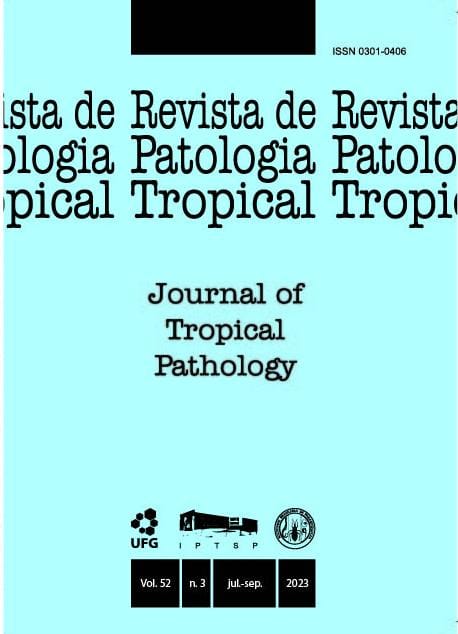Periumbilical purpuric rash as a clue to the diagnosis of strongyloidiasis and HTLV-1 infection
DOI:
https://doi.org/10.5216/rpt.v52i3.76271Resumo
ABSTRACT
Strongyloidiasis is a parasitic disease caused by the nematode Strongyloides stercoralis, widely distributed in Brazil. In general, it manifests with nonspecific gastrointestinal symptoms. However, in severe cases, pulmonary, neurological and systemic manifestations may occur, culminating in high mortality rates. Exceptionally, there may be a single-appearing periumbilical purpuric eruption. The prognosis is related to the rapid diagnosis and to beginning of the therapy. The case of an elderly man, former alcoholic, with chronic abdominal pain, fever and unexplained weight loss, in addition to periumbilical purpura is reported on this study. The manifestation motivated a specific investigation in which resulted in the diagnosis of strongyloidiasis and infection by human T-lymphotropic virus 1 (HTLV-1).
KEY WORDS: Strongyloidiasis; Strongyloides stercoralis; HTLV-1; Purpura
Downloads
Downloads
Publicado
Como Citar
Edição
Seção
Licença
The manuscript submission must be accompanied by a letter signed by all authors stating their full name and email address, confirming that the manuscript or part of it has not been published or is under consideration for publication elsewhere, and agreeing to transfer copyright in all media and formats for Journal of Tropical Pathology.

